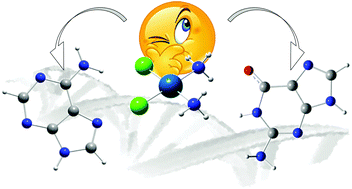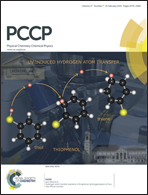Abstract
The interaction of the widely used anticancer drug cisplatin with DNA bases was studied by EXAFS and vibrational spectroscopy (FTIR, Raman and INS), coupled with DFT/plane-wave calculations. Detailed information was obtained on the local atomic structure around the Pt(II) centre, both in the cisplatin–purine (adenine and guanine) and cisplatin–glutathione adducts. Simultaneous neutron and Raman scattering experiments allowed us to obtain a reliable and definite picture of this cisplatin interplay with its main pharmacological target (DNA), at the molecular level. The vibrational experimental spectra were fully assigned in the light of the calculated pattern for the most favoured geometry of each drug–purine adduct, and cisplatin's preference for guanine (G) relative to adenine (A) within the DNA double helix was experimentally verified: a complete N by S substitution in the metal coordination sphere was only observed for [cDDP–A2], reflecting a somewhat weaker Pt–A binding relative to Pt–G. The role of glutathione on the drug's pharmacokinetics, as well as on the stability of platinated DNA adducts, was evaluated as this is the basis for glutathione-mediated intracellular drug scavenging and in vivo resistance to Pt-based anticancer drugs. Spectroscopic evidence of the metal's preference for glutathione's sulfur over purine's nitrogen binding sites was gathered, at least two sulfur atoms being detected in platinum's first coordination sphere.



 Please wait while we load your content...
Please wait while we load your content...